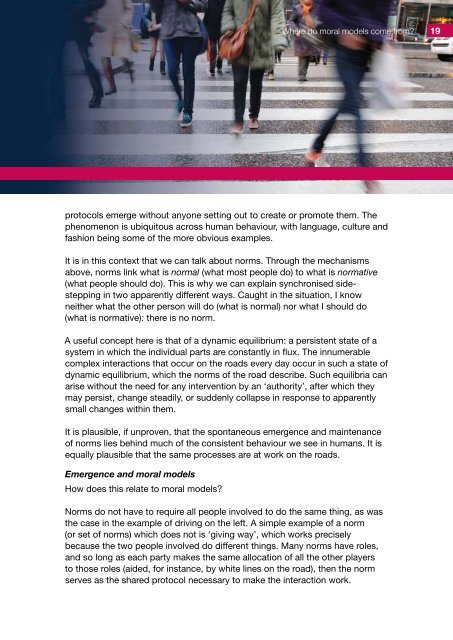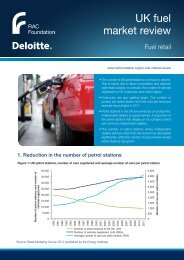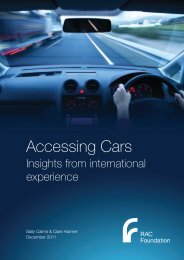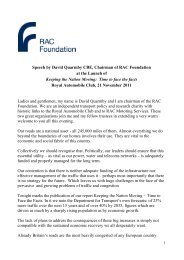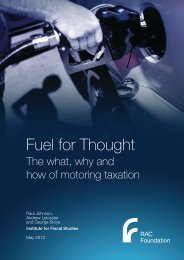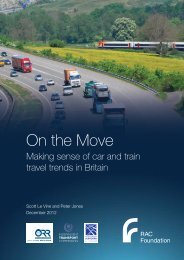Road sharing - does it matter what road users think of each other?
Road sharing - does it matter what road users think of each other?
Road sharing - does it matter what road users think of each other?
Create successful ePaper yourself
Turn your PDF publications into a flip-book with our unique Google optimized e-Paper software.
Where do moral models come from?19protocols emerge w<strong>it</strong>hout anyone setting out to create or promote them. Thephenomenon is ubiqu<strong>it</strong>ous across human behaviour, w<strong>it</strong>h language, culture andfashion being some <strong>of</strong> the more obvious examples.It is in this context that we can talk about norms. Through the mechanismsabove, norms link <strong>what</strong> is normal (<strong>what</strong> most people do) to <strong>what</strong> is normative(<strong>what</strong> people should do). This is why we can explain synchronised sidesteppingin two apparently different ways. Caught in the s<strong>it</strong>uation, I knowne<strong>it</strong>her <strong>what</strong> the <strong>other</strong> person will do (<strong>what</strong> is normal) nor <strong>what</strong> I should do(<strong>what</strong> is normative): there is no norm.A useful concept here is that <strong>of</strong> a dynamic equilibrium: a persistent state <strong>of</strong> asystem in which the individual parts are constantly in flux. The innumerablecomplex interactions that occur on the <strong>road</strong>s every day occur in such a state <strong>of</strong>dynamic equilibrium, which the norms <strong>of</strong> the <strong>road</strong> describe. Such equilibria canarise w<strong>it</strong>hout the need for any intervention by an ‘author<strong>it</strong>y’, after which theymay persist, change steadily, or suddenly collapse in response to apparentlysmall changes w<strong>it</strong>hin them.It is plausible, if unproven, that the spontaneous emergence and maintenance<strong>of</strong> norms lies behind much <strong>of</strong> the consistent behaviour we see in humans. It isequally plausible that the same processes are at work on the <strong>road</strong>s.Emergence and moral modelsHow <strong>does</strong> this relate to moral models?Norms do not have to require all people involved to do the same thing, as wasthe case in the example <strong>of</strong> driving on the left. A simple example <strong>of</strong> a norm(or set <strong>of</strong> norms) which <strong>does</strong> not is ‘giving way’, which works preciselybecause the two people involved do different things. Many norms have roles,and so long as <strong>each</strong> party makes the same allocation <strong>of</strong> all the <strong>other</strong> playersto those roles (aided, for instance, by wh<strong>it</strong>e lines on the <strong>road</strong>), then the normserves as the shared protocol necessary to make the interaction work.


